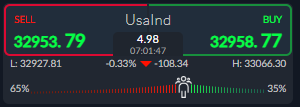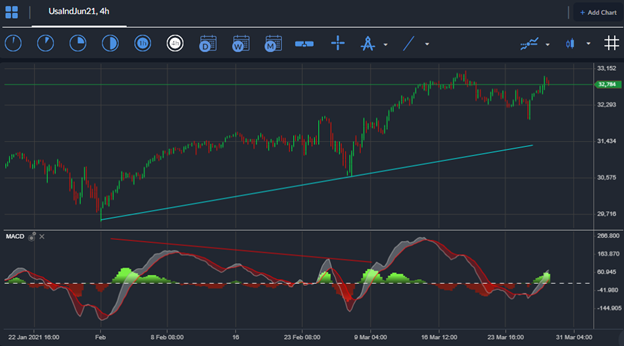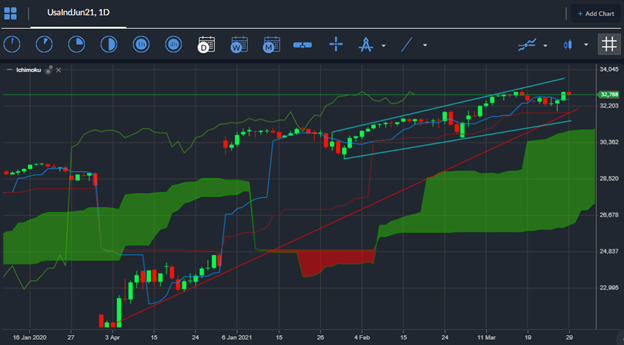The Dow Jones Industrial Average is set for another volatile trading week as the potential for risk-off trading sentiment returning to US equity markets increases due to the liquidation of Archegos Capital.
Market participants are braced for the US market open, following news that Nomura Bank is set for significant losses due Archegos Capital blowing up last Friday, after the company incurred significant trading losses.
Risk-off trading sentiment could hurt US stocks at the early part of this week, at a time when the market is finally balanced going into the end of the month, and more importantly, the end of the fiscal quarter.
The DJIA has been the star performer out the leading US indices over recent months, however, a substantial amount of negative MACD price divergence is also warning that the index could reverse all the way back to 28,600.
Goldman Sachs has been out a note to investors at the start of the week noting that “there is a vulnerability to stocks right now”. The investment bank also remarked that “the bond sell-off has driven indigestion for risky assets and growth might disappoint, due to lockdowns such as those in Europe”.
Key risk events for the Dow Jones Industrial Average this week include the release of the ISM manufacturing report, the Non-farm Payrolls jobs report, and a key speech on infrastructure spending from Joe Bide.
Potentially, the infrastructure speech from the Biden administration could be the make-or-break moment for the index, as market participants are expecting the US President to announce a massive $3 trillion spending bill.
The VIX CBOE Volatility Index is relatively depressed at the moment, after spiking towards the 24 level on Friday. Typically, volatility spikes can catch traders off-guard when they are consolidating around depressed levels. A breakout looks set to take place once the 24 to 16 range is broken.
Sentiment towards the index is turning more negative at the moment. The ActivTrader Market Sentiment tool shows that some 65 percent of traders are currently bearish towards the DJIA, and 35 of traders are bullish towards the index.
The up move in the DJIA is therefore likely to continue why the herd continue to trade against the bullish trend. We probably need to see more traders turning overly bullish before a reversal can happen.
Dow Jones Industrial Average Short-Term Technical Analysis
The four-hour time frame shows large amounts of negative MACD price divergence, which extends down towards the 28,600 level. Traders need to be careful as the bearish divergence is reaching extreme proportions and could be reversed on a significant pullback..
It should be noted that MACD price divergence can take time to unwind, so a bearish fundamental catalyst could be needed to trigger a major down move in the Dow Jones Industrial Average.
See real-time quotes provided by our partner.
Dow Jones Industrial Average Medium-Term Technical Analysis
Looking at the daily time frame, a rising broadening wedge pattern is currently in play between the 33,500 and 29,500 levels. Typically, these types of patterns are bearish reversal patterns, which have a high degree of accuracy.
The 31,500 level is a key area to watch if a pullback from the top of the mentioned wedge pattern. A key rising trendline, which is formed by attaching the March 2020 low to the November 2020-low is found at the 31,500 level.
Overall, watch out for the next major bearish or bullish directional move once the 31,500 to 33,500 price range is broken.
See real-time quotes provided by our partner.







